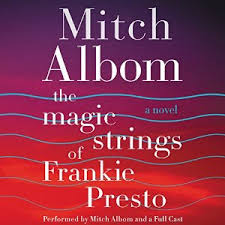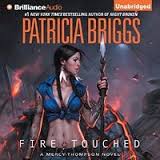First Pages of Best-Selling Novels: Menagerie
Mangerie by Rachel Vincent is a novel that fits into a number of genres: contemporary fantasy, magical realism, romance. It features a fascinating premise: a woman who goes to see a carnival that’s come to town discovers a fierce, sharp-clawed creature lurking just beneath her human veneer. Captured and put on exhibition, Delilah is stripped of her worldly possessions, including her own name, as she’s forced to “perform” in town after town.
As we’ve been doing every Wednesday since the New Year rushed in, let’s look at this first page of this novel by best-selling author Vincent and see how it measures up to my first-page checklist.
Note that first pages carry a heavy burden in a novel. It’s the make-or-break page for the reader. Many people won’t read past the first page if it fails to engage their interest. So writers need to pay huge attention to the first page—maybe not so much at the first-draft stage, but at some point before that novel is submitted to agents or published.
First pages need to be tight, with concise description, and jump right into dynamic action and hint of conflict. Every word counts, so excess verbiage and unimportant movement and speech must be eliminated.
Readers want to see the scene played out, not be told about it with lengthy narrative and explanation. They don’t want ordinary and predictable. They want their curiosity aroused and their hearts tugged as quickly as possible. They want to latch on to a character who intrigues them and who’s facing challenging circumstances.
Consider using it yourself as you read through novels and study how various authors craft those opening pages of their novels or short stories. And use it on your own scenes too. An opening page doesn’t have to have all these things checked off, but it should have most. See what you notice as you read the first page of Menagerie.
Part 1
Exposé
Twenty-five years ago . . .
The heat rippling over the surface of Charity Marlow’s Blacktop driveway was one hundred twelve degrees. It was nearly one hundred nine in the shade from the scrub brush that passed for trees in her front yard.
She sat on a white iron bench in her backyard, picking at the paint flaking off the arm scrolls. A glass of sweet tea stood on the empty plant stand to her right, thinner on top, where the ice cubes melted, thicker on bottom, where the sugar settled.
Inside, the baby was crying.
She’d been going for close to three hours this time, and Charity’s arms ached from holding her. Her head throbbed and her feet were sore from standing. From pacing and rocking in place. Her throat was raw from crooning, her nerves shot from exhaustion, and her patience long worn thin.
She’d decided to go inside again when the last ice cube had melted into her tea, and not a minute later.
Not a minute earlier either, even though the top of her head felt close to combusting from the heat of the sun.
She stared at the cracked earth beneath her feet, at the hands in her lap, watching her own fingers shake from exhaustion. Then she stared at her tea as the ice cubes shrank before her eyes, and still the baby screamed.
Then, the last ice cube melted.
Despair swallowed Charity like the whale swallowed Jonah, but she held no hope of being spit back out. Her arms felt like they were made of iron as she lifted her tea.
She closed her eyes while the top of her skull burned in the blazing sunlight. “Lord,” she whispered, condensation dripping over her fingers from the outside of her cold glass, “wont you take this angry child and give me a quieter, happier one in her place?”
Why This Works
Let’s take a look at this first page by going through the checklist items.
Opening Hook: Here’s another novel (see last week’s) that starts with the weather. This bit is brief and sets up a sweltering setting, which is just one component oppressing Charity. It’s not all that strong of a hook, but the author does a slow build (broil) here to a tense almost horror-genre opening. So I feel it’s appropriate, although I’m wondering how Charity knows the exact temperature (more on that below)
Introduction of main character in first few lines: Yes, Charity is right there and we see her sitting.
Starting the story in the middle of something that’s happened (or happening): It’s a slow, subtle start, but we quickly feel that there’s some underlying problem. She’s outside picking flakes of paint and literally watching ice cubes melt, and her baby is inside crying.
A nod to setting; avoid excessive exposition or narrative: We get the blacktop, dirt under her feet, scrub brush passing for trees. We don’t get a whole lot of setting, nor do we know exactly where Charity is, but all we really need to know is it’s killer hot outside, and maybe there is cool air conditioning inside, but Charity chooses to sit in the heat.
A catalyst, inciting incident, or complication introduced for your character: The baby crying is the complication. We see in subtle tones that she is seriously stressed about this. Her fingers shaking from exhaustion really sum it up, and any parent who’s had a colicky baby can relate.
A hint at character’s immediate intentions: She wants to take care of her child, but she’s trying to wait out the crying, hoping baby will stop. Her immediate intention is to stick to her plan and not fall apart.
A hint at character’s hidden need, desire, goal, dream, fear: Her need is for her baby to go to sleep, to get some sleep herself.
Unique voice/writing style: Nice, simple, clear style. Nothing unique or special but very readable and appropriate for the scene and genre.
Setting the tone for the book: Vincent sets a great slow burn tone for this story. At first it seems boring, that there’s nothing happening, but that’s a deliberate tone and mood, with the sense of time moving slowly and agonizingly.
A glimpse at character’s personal history, personality—shed light on motivation: We can tell Charity is a concerned mother, that she’s trying to hold it together. We don’t know anything about her history or if she has any help with her baby. But we can tell her motivation is to hang in there and not lose it in exhaustion.
Hint of character’s initial plot goal: Not yet. Other than to deal with her baby. This is twenty-five years before the actual story starts, so this may not be at all applicable.
A course of action/decision implied. Introduction of high stakes/dramatic tension: Yes, she is going to go in and deal with her baby. Dramatic tension occurs when she prays for a different baby (which then turns macabre as the baby instantly quiets and Charity, fearful, goes inside, afraid her baby has died). There’s a gradual build on the opening pages of tension, and she does have a course of action and decision—to go in and tend to her baby.
Good pacing; jump right into present action. No backstory: No backstory. Just showing the present moment. The pacing is slow, but deliberately slow.
- One characteristic to reveal that makes your character heroic and vulnerable: Her effort at taking care of her baby in the middle of difficult circumstances. We can empathize and relate (and commiserate).
- One element of mystery, something hinted at that raises curiosity: Doesn’t really come until the next page, after her prayer and the baby going silent.
- One element out of the ordinary, unusual, that makes the book different/stand out: The interesting attention to minutiae on this first page, the POV focus on the ice melting, the sugar lumped in the bottom of her tea. There’s nothing extraordinary, but the immediacy of the present action is good.
- Concise, catchy dialogue (if in the first scene) that is not boring or predictable: No dialogue.
- A hint at theme: Unclear, although by the end of the scene, it may have something to do with “be careful what you wish [or pray] for.”
What Could Have Been Better
Little things, mostly. Rather than just tell me the temperatures, I’d like to see Charity looking at the temperature maybe on a thermometer. The omniscient POV (how would she know the exact temps?) is a little annoying and unnecessary.
This is minor, but the bit about the tea being thinner on top and thicker at the bottom kind of gave me pause. I started thinking about the physics of that, and would the liquid actually be thinner or thicker? Or did she mean the tea was more diluted on top due to the melting ice? You don’t really think of tea in terms of thick and thin. Okay, that’s neither here nor there, but it distracted me just a little.
I think Vincent could have come up with a stronger hook. Why not show the sweltering heat a little further down (show, not tell)? I’d prefer she start with a line like “The baby was crying inside the house.” Why? Because it’s repeated twice further down, and the more it’s said, the more creepy it feels, alerting the reader that something is going to happen with the baby.
Also, in her POV, it just seems a bit off to say “the baby” and “she” and never say the child’s name. It feels out of POV. This passage could be interpreted as either Charity’s or an omniscient POV, but I’d tweak it so it’s fully in her POV. She is the one keenly aware of the heat, her aching arms, her exhaustion.
It might be nice to state somewhere where she lives (town, state), but it’s not all that necessary. We don’t know if she’s married, and while that isn’t needed either, it could be nice to get a hint at why she doesn’t have help (husband at work, no other family?) or get help (can’t afford a part-time babysitter?). But all in all, we see she is at the end of her emotional and physical rope.
And because of that, I’d like to see a bit more desperation and passion in that prayer (because once she says it, she’s horrified and wishes she could take it back . . . and I won’t tell you what happens—you will have to read on!). It comes across a bit too much of a mindless passing thought, when, to me, it should be a last-ditch plea of desperation wrenched from her heart. Which would much better set up the horror to come.
But, it still works very well, to me. These are very minor things I might tweak, but overall I really like this. I like the slow build of tension, because I know, because of the genre, that this isn’t going to be a light, fluffy scene. This is a book I want to read.
Your thoughts? What did you like or dislike? Would you read on? What would you do differently on this first page?












What I dislike is the mentioning of the hot temperatures and sitting on an iron bench considering the heat conduction of metal. Unless she has taken leave of her good senses, why would she sit on what I imagine would be a scalding hot bench?
Vincent says, “she decided to go in again” then speaks about her looking at the cracked earth beneath her feet. There is never any movement to go in, was her decision to go inside just a thought?
Thanks for sharing those great observations. Thing is, we writers see the scene in our head, but often it doesn’t translate clearly enough, as some details are lacking, and with the hot bench, the author just might not have immersed herself long enough in the scene as her character to catch this detail. We all hope that with critique partners or editors, someone will catch little things like this, since we all do this to some extent.
This posting, plus “Closer to the Heart” posting, is exactly what I needed today. I am planning to rewrite the opening pages to my novel. A couple of my beta readers said that my present “opening” is not appropriate, not exciting — change it. So, lo and behold, I see a great posting on your outstanding site. Thank you, thank you, thank you.